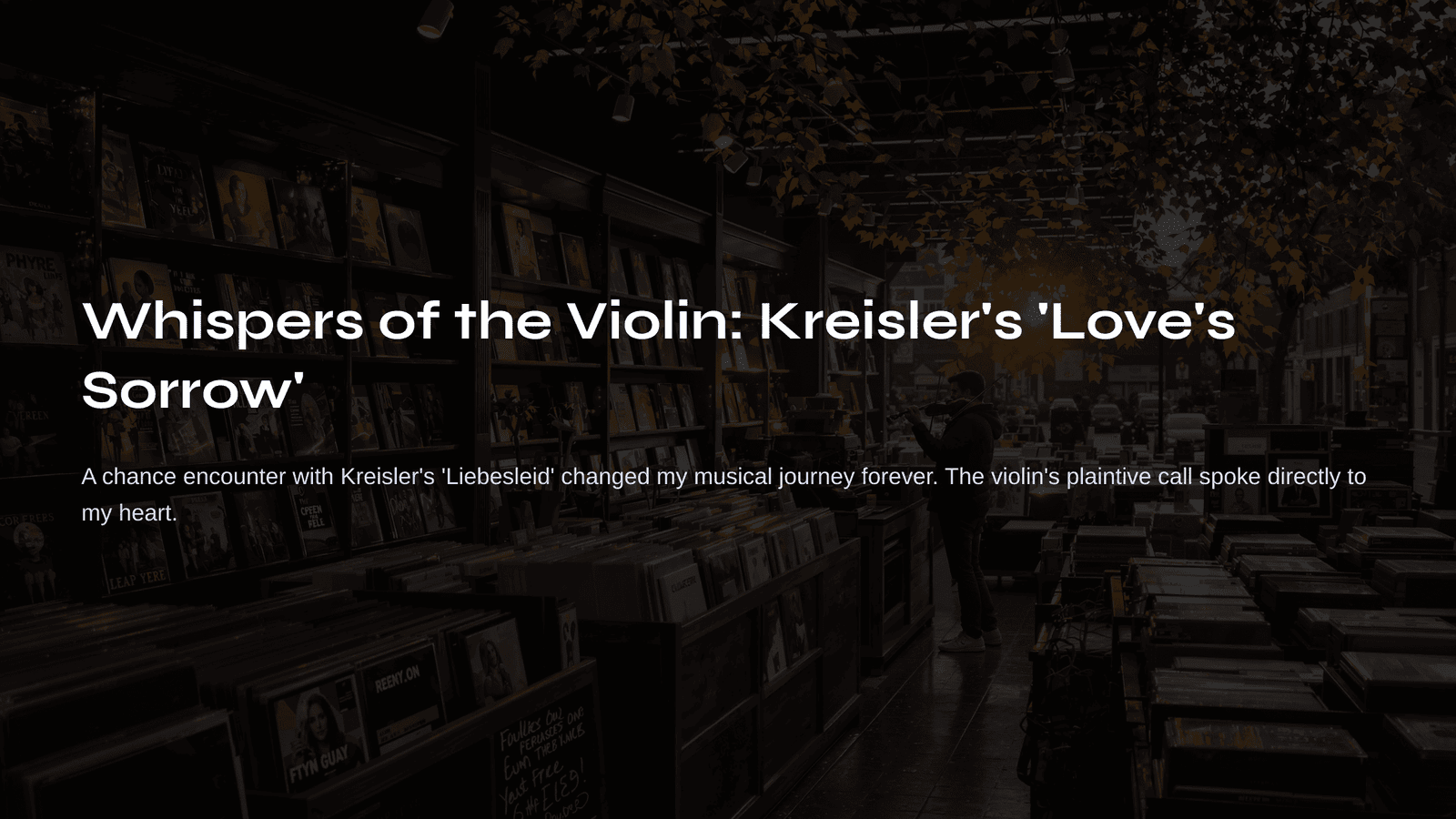Table of Contents
On an autumn evening, a melody drifting from an old record store stopped me in my tracks. The plaintive call of a violin penetrated deep into my heart, like the longing for a distant lover. That first encounter with Kreisler’s ‘Liebesleid’ would come to hold a special place in my musical journey.
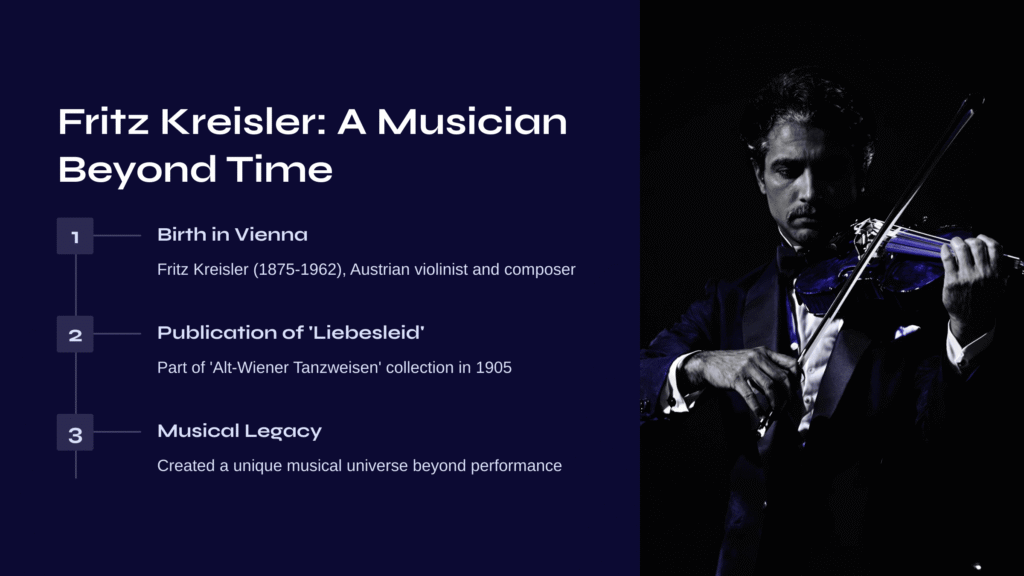
Fritz Kreisler: A Musician Beyond Time
Fritz Kreisler (1875-1962) was an Austrian violinist and composer from Vienna who brilliantly illuminated the classical music world of the early 20th century. He was more than just an exceptional performer; he was an artist who created his own unique musical universe.
‘Liebesleid’ (Love’s Sorrow) was published in 1905 as part of the collection ‘Alt-Wiener Tanzweisen’ (Old Viennese Dance Tunes). This collection also includes ‘Liebesfreud’ (Love’s Joy) and ‘Schön Rosmarin’ (Beautiful Rosemary), offering us a glimpse into how Kreisler expressed different facets of love through music.
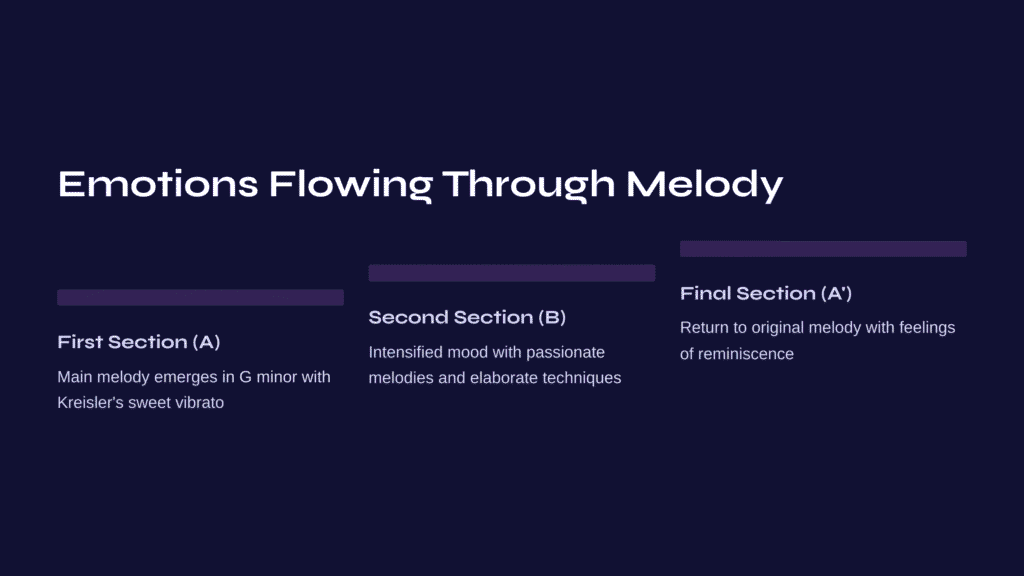
Emotions Flowing Through Melody
When the first notes of ‘Liebesleid’ begin, you might feel as though you’ve been invited to an old Viennese ballroom. The lyrical melody in G minor creates a fascinating contrast with the elegant waltz rhythm—light and dance-like on the surface, yet with a hidden sorrow that adds depth to the piece.
The composition can be divided into three main sections:
In the first section (A section), the main melody quietly emerges in G minor. The violin’s melancholy timbre seems to whisper a story. Kreisler’s signature sweet vibrato particularly shines here, captivating the listener’s heart.
The second section (B section) intensifies the mood. More passionate melodies and dynamic expressions appear, as if representing a moment when the pain of love intensifies. Here, Kreisler displays more elaborate violin techniques, adding emotional depth.
In the final section (A’ section), we return to the original melody, now infused with feelings of reminiscence and resignation. The gradually fading sound in the final measures leaves a lingering impression, like watching a love that slowly walks away.
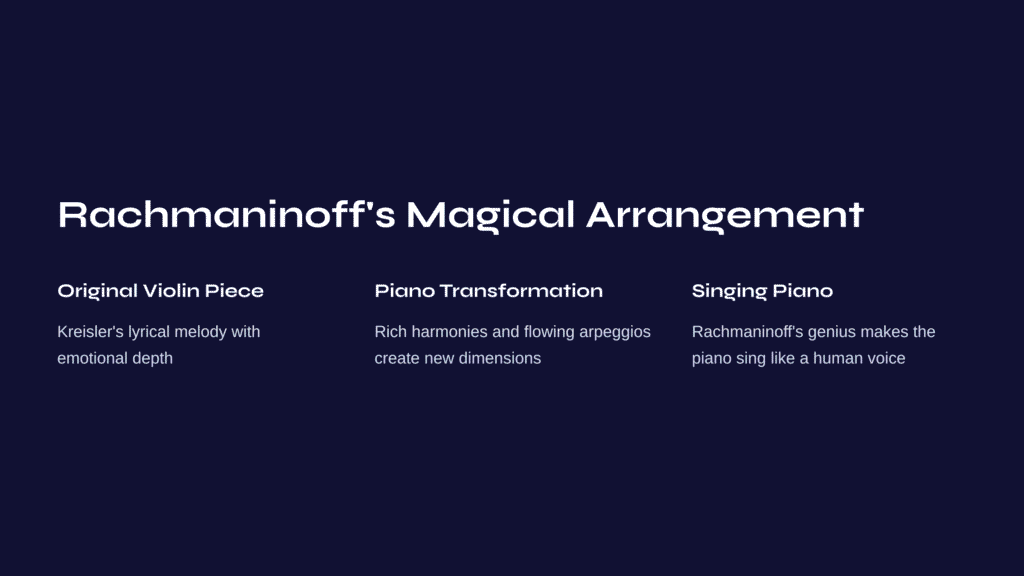
Rachmaninoff’s Magical Arrangement
As beautiful as Fritz Kreisler’s ‘Liebesleid’ is in its original form, Sergei Rachmaninoff’s piano solo arrangement brought it to another dimension of emotional impact.
Rachmaninoff reinterpreted the violin’s lyrical melody in the language of the piano, maintaining the original’s emotional essence while adding his own colors. The rich harmonies and flowing left-hand arpeggios create an atmosphere reminiscent of autumn rain falling on Viennese streets. Rachmaninoff’s genius is particularly evident in passages where the piano seems to sing, almost like a human voice.
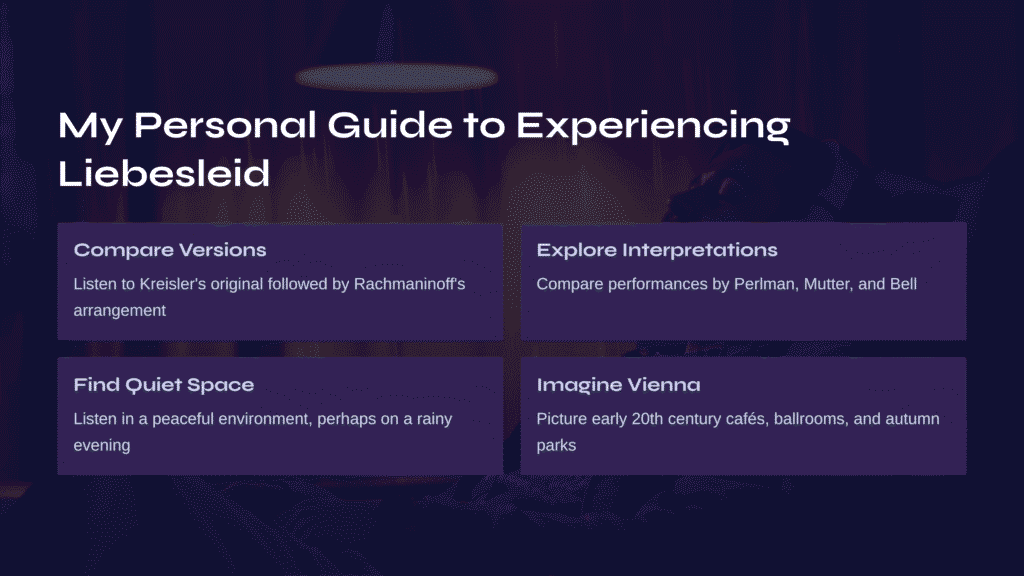
My Personal Guide to Experiencing Liebesleid
I’d like to share a few tips for deepening your appreciation of this beautiful piece:
- Compare Original and Arrangement: Listen to Kreisler’s original violin composition followed by Rachmaninoff’s piano arrangement. You’ll experience the mysterious sensation of hearing the same story told by different voices.
- Explore Different Interpretations: Compare performances by violinists like Itzhak Perlman, Anne-Sophie Mutter, and Joshua Bell. You’ll discover that each artist expresses “love’s sorrow” in subtly different ways.
- Find a Quiet Space for Total Immersion: This piece is most moving when heard in a peaceful environment, perhaps on a rainy evening. Sit in a comfortable chair, close your eyes, and surrender yourself to the imagery the music creates.
- Let Your Imagination Soar: Try imagining early 20th century Vienna—its cafés, ballrooms, or autumn parks in the rain—as you listen. Music is not merely sound; it’s a medium that tells stories.
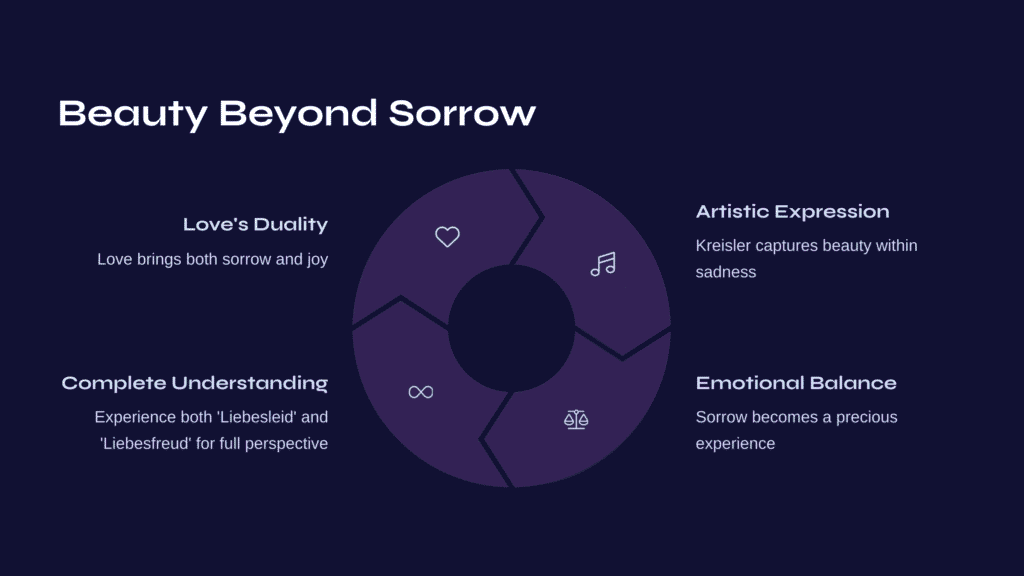
Beauty Beyond Sorrow
What makes ‘Liebesleid’ special is its ability to express sorrow while maintaining beauty and dignity. It’s not merely sad—it has the power to help us discover beauty within sadness and learn to cherish it.
Love inevitably brings sorrow along with joy. Through this work, Kreisler reminds us that love’s sorrow is not an emotion to be avoided, but rather a precious experience that makes us feel truly alive.
Perhaps next time, you might try listening to ‘Liebesfreud’ (Love’s Joy) immediately after, to more deeply understand the duality of love as expressed by Kreisler. In that moment where sorrow and joy intersect, we might come one step closer to understanding the essence of love.
“Next time, why not experience ‘Liebesfreud (Love’s Joy)’ to more deeply understand the duality of love as expressed by Kreisler? Continue reading about ‘Love’s Joy’ through the link below. In that moment where sorrow and joy intersect, we might come one step closer to understanding the essence of love.
👉 [The Other Face of Love: Exploring Kreisler’s ‘Liebesfreud (Love’s Joy)’ – Read More](link address)”
